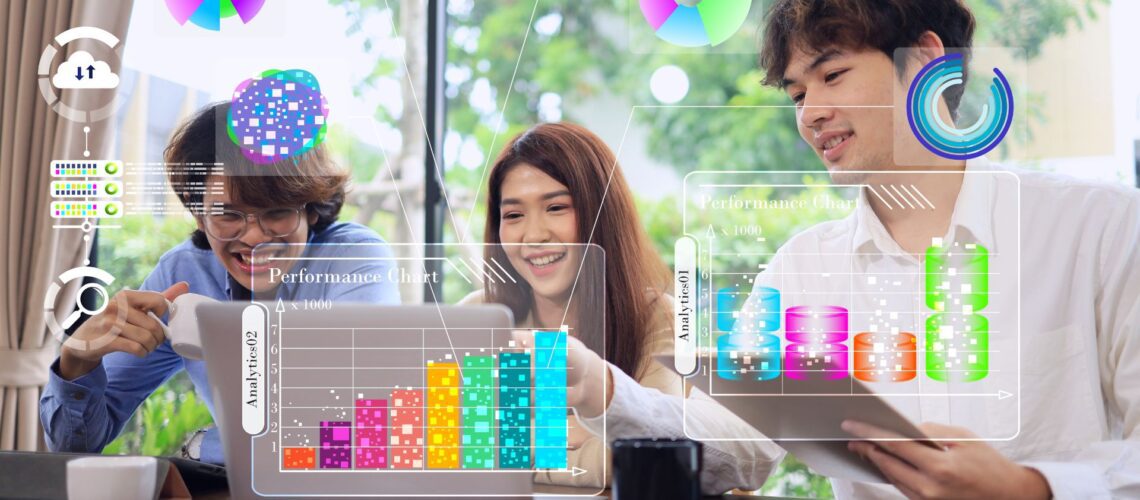As a pharmacist, I spent years translating complex scientific data for diverse stakeholders – from healthcare professionals to patients to regulatory bodies. The challenge of making technical information accessible without losing scientific integrity was constant.
When I transitioned into training and coaching, I realised this struggle wasn’t unique to me. Scientific and technical professionals across pharmaceutical, IT, and life sciences face the same challenge daily: how do you convey complex data to audiences who lack technical backgrounds whilst maintaining credibility and accuracy?
The consequences of getting it wrong are significant. Misunderstood data leads to poor decisions. Overwhelmed stakeholders disengage. Valuable insights that could drive innovation or solve problems get lost in jargon and complexity.
Scientific and technical professionals play a pivotal role in bridging the gap between the scientific community and diverse stakeholders. Whether presenting to executives, policymakers, or non-specialist colleagues, the challenge remains consistent: simplify information without diluting scientific integrity.
Research shows that the human brain processes visuals 60,000 times faster than text,1 yet many technical presentations still rely heavily on dense data tables and jargon-heavy explanations. Understanding how to communicate effectively isn’t just a nice-to-have skill – it’s essential for career advancement and organisational success.
Here are seven practical strategies that actually work.
Practical Strategies for Scientific Communication
1. Know Your Audience
Understanding your audience’s knowledge level and interests is crucial. Tailor your message to align with their existing knowledge base and priorities.
Finance directors care about cost implications and ROI. Marketing teams focus on customer impact metrics. Senior executives need high-level strategic insights that inform decision-making.
When speaking with finance or marketing teams, highlight key takeaways that impact business outcomes. Avoid jargon-heavy explanations that lead to confusion. Conduct pre-presentation research to understand their decision-making pressures and preferred communication styles.
2. Focus on Key Messages
Prioritise the main points you want your audience to remember. Rather than overwhelming them with comprehensive datasets, focus on three to five critical insights that have the greatest impact.
According to recent studies, 74% of employees feel overwhelmed when working with large datasets.2 This reinforces why message prioritisation matters so much.
Consider using the “pyramid principle”: lead with conclusions, followed by supporting arguments and detailed evidence. Identify which data points genuinely influence decisions versus those that merely demonstrate thoroughness.
3. Use Analogies and Simplified Concepts
Relating complex scientific data to everyday concepts makes it more digestible. Analogies serve as cognitive bridges, helping non-technical audiences grasp sophisticated concepts without requiring specialist knowledge.
For instance, explaining network security protocols might involve comparing them to postal system safeguards. Describing database relationships could reference familiar filing systems. Comparing a drug’s mechanism of action to familiar processes creates strong mental connections that simplify understanding.
The key lies in selecting analogies that accurately represent the underlying concept whilst remaining relevant to your audience’s experience. Effective analogies maintain scientific accuracy whilst simplifying complexity.
4. Visual Aids and Data Storytelling
Data visualisation tools like infographics, charts, and simplified diagrams are essential for clarifying complex information. Pair these visuals with a narrative that guides stakeholders through the data, helping them understand not just the “what” but the “why” and “how.”
Research by brain researchers shows that people following directions with text and illustrations do 323% better than people following directions without illustrations. This evidence supports the strategic use of visual workflows and process diagrams.
Modern AI-driven tools can sift through vast datasets, identifying crucial patterns and anomalies, then automatically visualise them effectively. Current trends emphasise interactive visualisations that allow stakeholders to explore data independently and real-time dashboards that support immediate decision-making.
When designing visualisations, prioritise clarity over complexity. Ensure visual elements directly support your key messages rather than serving as decorative additions.
5. Be Concise and Structured
Organise your communication in a clear, logical format. Start with an overview of key points, delve into details, and conclude with a summary that reinforces main messages. This structure helps non-scientific stakeholders follow along and absorb information.
Begin presentations with executive summaries outlining key findings. Progress through supporting evidence systematically. Conclude with actionable recommendations.
Use signposting language to guide audiences through complex information: “The first key finding demonstrates…”, “Moving to implementation considerations…”, “The primary recommendation involves…”. Strategic use of white space, section breaks, and transition statements helps audiences process information systematically.
6. Engage and Invite Questions
Encourage dialogue by inviting questions and feedback. This approach not only clarifies misunderstandings but also demonstrates openness and collaboration, strengthening trust between communicator and audience.
Incorporate regular check-ins to assess comprehension. Invite specific questions about implementation challenges. Encourage stakeholders to share relevant experiences or concerns.
Consider using polling tools, small group discussions, or scenario-based exercises that allow stakeholders to apply insights to their specific contexts. Interactive elements transform passive presentations into collaborative discussions that enhance understanding and buy-in.
Effective comprehension assessment goes beyond asking “Are there any questions?” Ask stakeholders to summarise key points in their own words, request examples of how they might apply insights, or invite them to identify potential implementation challenges.
7. Practice Empathy and Adaptability
Adapt your approach as needed and show empathy towards your audience’s perspective. Recognising their potential challenges with scientific content allows you to adjust your communication style to suit their needs.
Successful communicators develop sensitivity to audience responses and adjust accordingly. This might involve simplifying explanations when confusion emerges, providing additional context for unfamiliar concepts, or shifting focus to address unexpected concerns.
Dynamic adaptation also involves recognising cultural and generational differences that influence information processing. Younger audiences might prefer interactive digital formats, whilst senior stakeholders might favour traditional presentation approaches with detailed handouts.
The trends toward greater collaboration and personalised learning promise to make scientific communication more inclusive and impactful. This evolution requires professionals to become more responsive to diverse learning styles and communication preferences.
The Strategic Advantage
Organisations increasingly recognise effective data communication as a competitive advantage. Companies implementing effective analytics programmes experience significant returns, but only when insights actually influence decision-making processes.
Technical professionals who master these communication strategies position themselves as strategic partners rather than purely technical resources. They become valued contributors to business planning, risk assessment, and innovation initiatives.
Effective communication accelerates project timelines by reducing misunderstandings, builds stakeholder confidence in technical recommendations, and enhances cross-functional collaboration essential for complex project success.
Those who develop these skills early in their careers will find themselves well-positioned for leadership roles that bridge technical expertise with business strategy.

Frequently Asked Questions About Techincal Communication Skills
Effective comprehension assessment goes beyond asking “Are there any questions?” Use specific techniques such as asking stakeholders to summarise key points in their own words, requesting examples of how they might apply the insights, or inviting them to identify potential implementation challenges. Watch for non-verbal cues like nodding, note-taking, and engaged body language. Consider incorporating brief polls or interactive exercises that reveal understanding levels without putting individuals on the spot.
Acknowledge the request positively whilst protecting the broader audience’s engagement. Offer to address technical questions in a separate session or follow-up discussion, provide detailed appendices for interested parties, or schedule brief one-on-one meetings after the presentation. This approach demonstrates responsiveness whilst maintaining focus on primary communication objectives. You might say, “That’s an excellent technical question. Let me capture that for our detailed discussion afterwards so we can explore it thoroughly.”
Successful simplification maintains scientific integrity whilst removing unnecessary complexity. Focus on essential mechanisms or relationships that drive your key findings rather than comprehensive technical details. Use analogies that accurately represent the underlying science, clearly distinguish between simplified explanations and complete technical descriptions, and offer to provide additional detail for those requiring deeper understanding. Always verify that simplifications don’t introduce misconceptions that could affect decision-making.
Making Your Data Count
Communicating complex data effectively is an essential skill for scientific and technical professionals aiming to build credibility and create meaningful relationships with non-technical stakeholders. By tailoring your approach, focusing on clear messaging, and utilising visual storytelling, you can bridge the knowledge gap and ensure your audience walks away with solid understanding of your key insights.
Mastering these communication strategies represents both an immediate professional advantage and a long-term career investment. As organisations become increasingly data-driven, professionals who can bridge the gap between analysis and action become invaluable strategic assets.
Start with small presentations to familiar audiences, gradually building complexity and scope as your confidence develops. Remember that effective communication serves a greater purpose than professional advancement. It ensures that valuable technical insights actually influence decisions, solve problems, and drive innovation.
In an era of information abundance, the ability to cut through complexity and deliver clarity has never been more crucial.

